1. Hashima Island, Japan
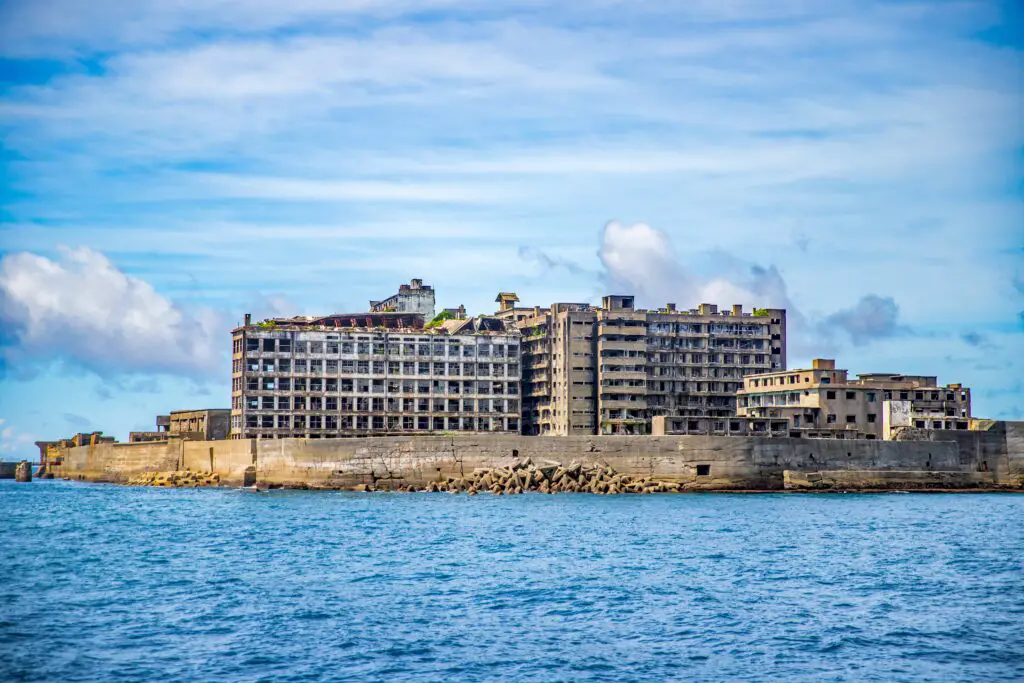
Once a bustling coal mining facility, Hashima Island—nicknamed “Battleship Island”—is now a ghostly shell of its former self. Located off the coast of Nagasaki, it was abandoned in the ‘70s when petroleum replaced coal as Japan’s go-to energy source. For years, the island was completely off-limits due to unsafe conditions. But now, even though some tours are offered in certain areas, much of it remains wide open and eerily unmonitored shares TheTravel.
The crumbling concrete buildings look like something out of a post-apocalyptic movie. Stairwells lead to nowhere, and empty schools and apartment blocks sit frozen in time. You could technically slip past the restricted zones, but it’s risky since parts of the island are unstable. Still, thrill-seekers have been known to make the journey, often undisturbed by anyone in authority adds the Mirror US.
2. Varosha, Cyprus

Varosha used to be a glamorous seaside resort town in the ‘70s, a favorite vacation spot for celebrities like Elizabeth Taylor and Brigitte Bardot. But after the Turkish invasion of Cyprus in 1974, it was fenced off and completely abandoned. For decades, it sat untouched, stuck in a strange time capsule with cars from the ‘70s still parked and clothes left in shop windows says Reuters.
While technically under Turkish military control, the area hasn’t been actively guarded for years. Some fences have fallen, and curious visitors occasionally sneak in to glimpse the forgotten paradise. The eerie silence and overgrown roads make it feel like walking into a dream—or a nightmare, depending on your mood. There’s still a sense of melancholy in the air, like the town is waiting for its people to come home shares Business Insider.
3. Pripyat, Ukraine
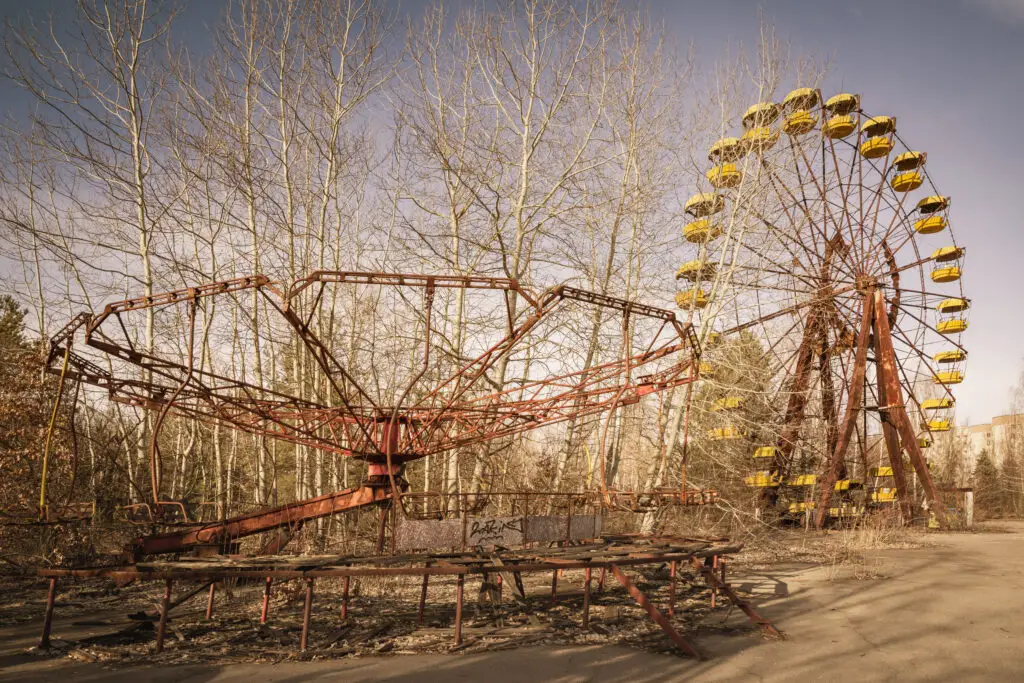
Best known for being near the Chernobyl Nuclear Power Plant, Pripyat was once a thriving Soviet city. It was evacuated overnight in 1986 after the nuclear disaster, and everything was left behind—books, toys, even meals on tables. For decades, it was highly restricted due to radiation levels, but now it’s part of guided tours and largely unguarded in many parts.
That doesn’t stop some adventurers from bypassing the official routes to explore the deeper, darker corners of the city. The famous Ferris wheel stands rusted but intact, casting a haunting shadow over the deserted square. Wildlife has reclaimed the area, with deer and foxes roaming the streets like they own the place. Despite the lingering danger, it has become a mecca for urban explorers and thrill-seekers.
4. Beelitz-Heilstätten Hospital, Germany
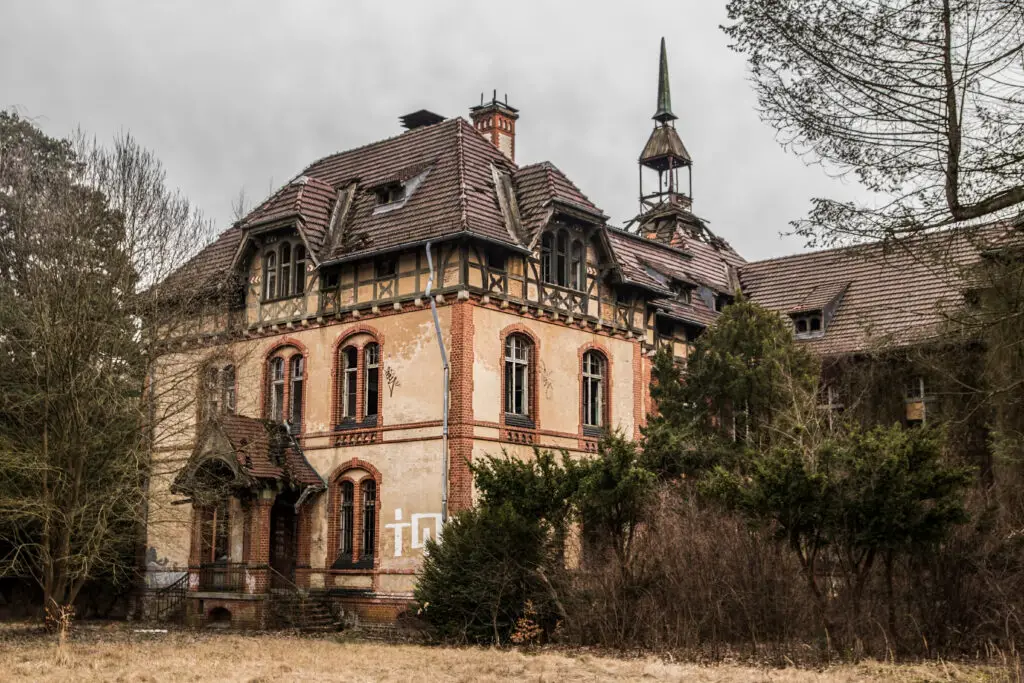
This sprawling hospital complex just outside Berlin was once a top-notch treatment center for tuberculosis and wounded soldiers—including Adolf Hitler. After World War II, it was used by the Soviet military before being abandoned in the ‘90s. For years it was off-limits due to crumbling walls and safety hazards, but now many buildings are accessible without much interference.
The grounds are massive, with ivy-covered walls and broken windows that make it feel like nature is swallowing it whole. Although there are some tours, plenty of people wander in on their own without encountering a single security guard. The silence in the corridors is bone-chilling, especially when you find old medical equipment still lying around. It’s beautiful and terrifying all at once.
5. Fordlandia, Brazil
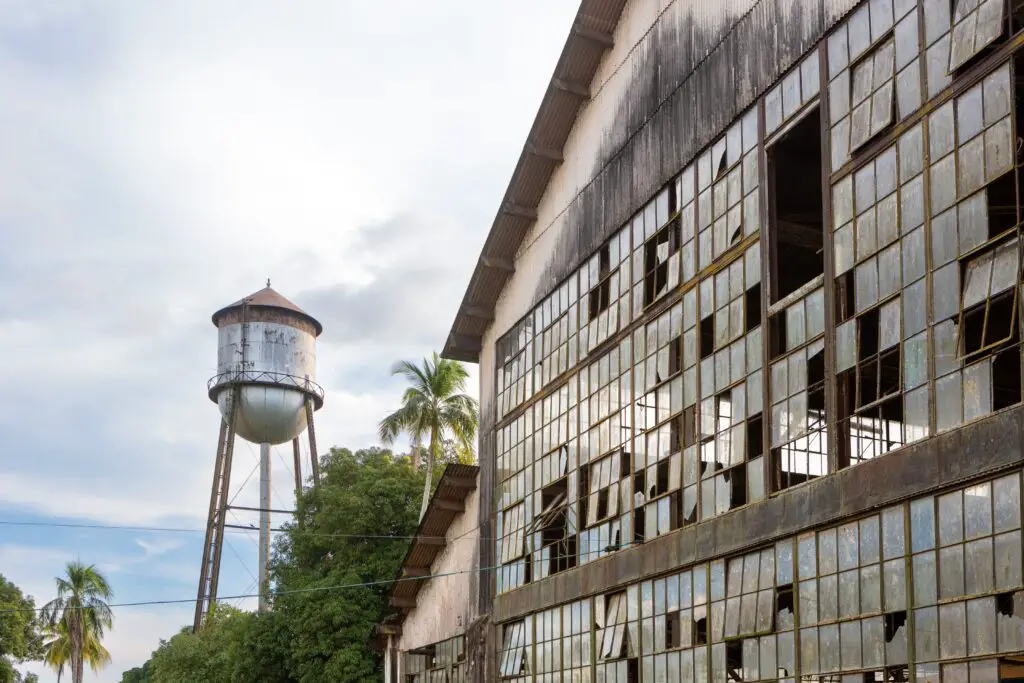
Back in the 1930s, Henry Ford had a wild idea: build an American-style town in the Amazon to produce rubber for car tires. What he ended up with was Fordlandia—a failed utopia plagued by mosquitoes, revolts, and cultural misunderstandings. The dream quickly crumbled, and the town was left to decay in the jungle.
Today, it’s still there, mostly forgotten and definitely not guarded. Locals live nearby, and you can stroll through the remnants of diners, factories, and even a dance hall. The jungle has taken over much of it, but you can still spot faded signs of American influence. It feels surreal to find a piece of Middle America tucked into the Amazon rainforest, completely open to anyone willing to find it.
6. Oradour-sur-Glane, France
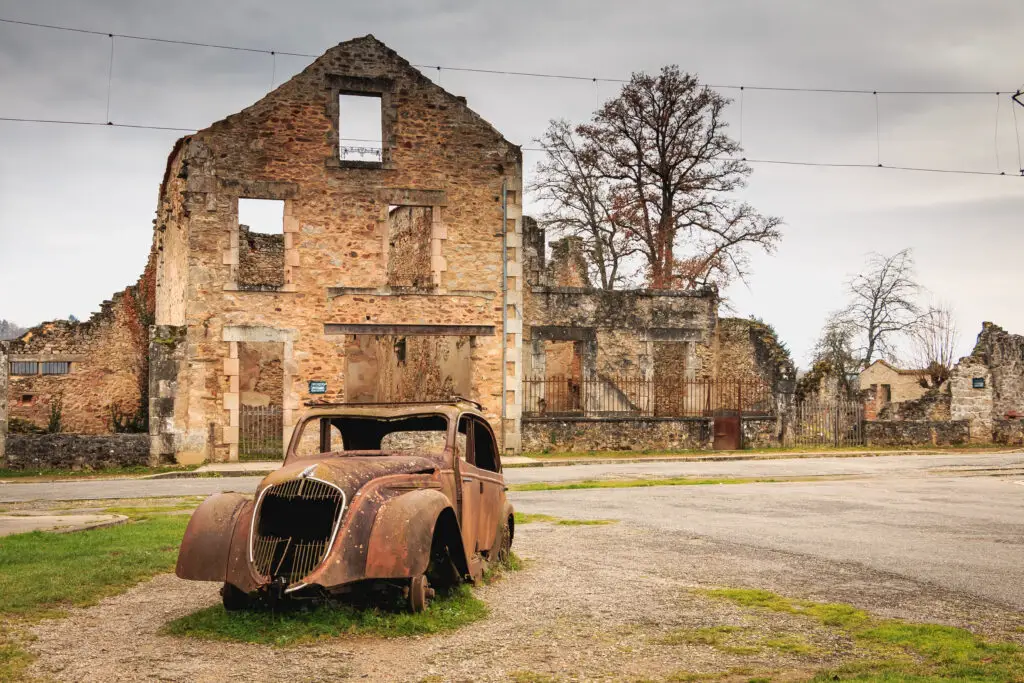
Oradour-sur-Glane is one of the most chilling reminders of World War II. In 1944, Nazi soldiers massacred 642 residents of this small French village. After the war, President Charles de Gaulle declared that it should never be rebuilt, but left as it was—as a memorial to the horrors that took place.
Even though it’s technically preserved as a historical site, much of it is left open and unguarded. You can walk among the burned-out cars, scorched buildings, and rusting bicycles without interruption. It’s deeply moving and strangely peaceful, with wildflowers growing where children once played. The silence here speaks louder than any tour guide ever could.
7. Kolmanskop, Namibia

In the early 1900s, Kolmanskop was a booming diamond mining town in the Namib Desert. It had everything—a hospital, a ballroom, and even the first X-ray station in the southern hemisphere. But when the diamond rush moved elsewhere, the town was abandoned and quickly swallowed by sand.
Now, the dunes spill into doorways and windows, creating surreal, Instagram-worthy scenes. Some of it is part of a protected heritage site, but much of the surrounding area is wide open with no one to stop you. The silence is total, broken only by the wind pushing sand through deserted hallways. It’s beautiful in a haunting, “nature always wins” kind of way.
8. Pyramiden, Norway (Svalbard)

Way up in the Arctic Circle lies Pyramiden, a Soviet mining town that was abandoned in 1998. Getting there is tricky—you need to travel by boat or snowmobile—but once you arrive, you’ll find a fully intact ghost town, complete with a statue of Lenin and Soviet-style apartment blocks. Officially, it belongs to Norway, but Russia still maintains nominal control.
Although there’s a caretaker and a tiny hotel for curious tourists, much of the area is completely unguarded. You can roam freely through the old school, gymnasium, and swimming pool, all frozen in time. It feels like the end of the world, and in a way, it is. The polar bears might be your only company out there.
9. Houtouwan, China
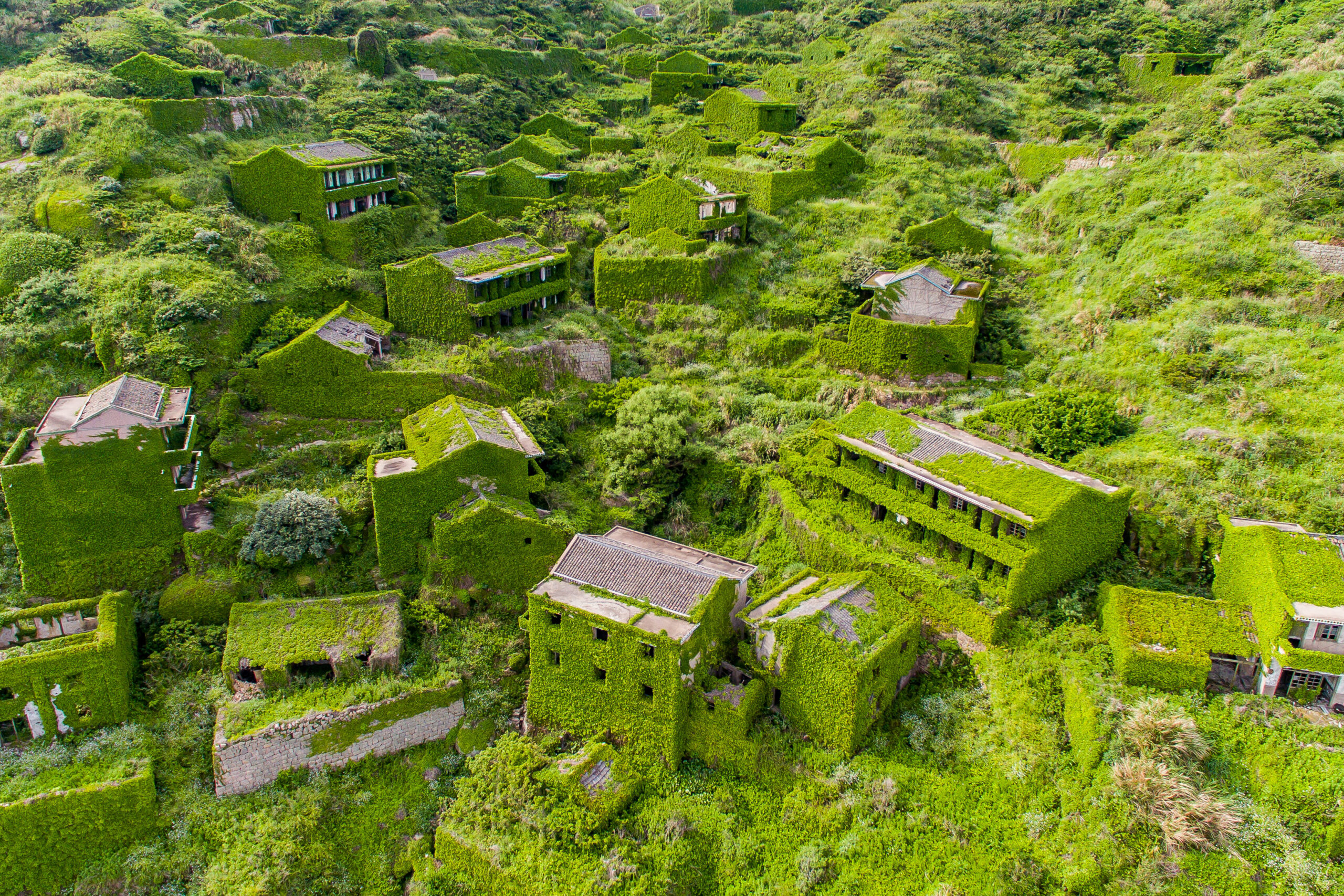
Houtouwan was once a thriving fishing village on Shengshan Island, off China’s eastern coast. But due to economic shifts and its remote location, it was abandoned in the ‘90s. Since then, nature has gone wild—vines crawl over rooftops, and entire homes are buried beneath greenery.
There are no guards or fences keeping people out, just a quiet understanding that this place belongs to the earth now. Some locals still live nearby, but the village itself is a favorite for photographers and hikers. It’s one of the most peaceful “ghost towns” you’ll ever see, wrapped in a green embrace. If anything, it’s nature’s idea of gentrification.
10. Gunkanjima Coal Mine Tunnels, Japan
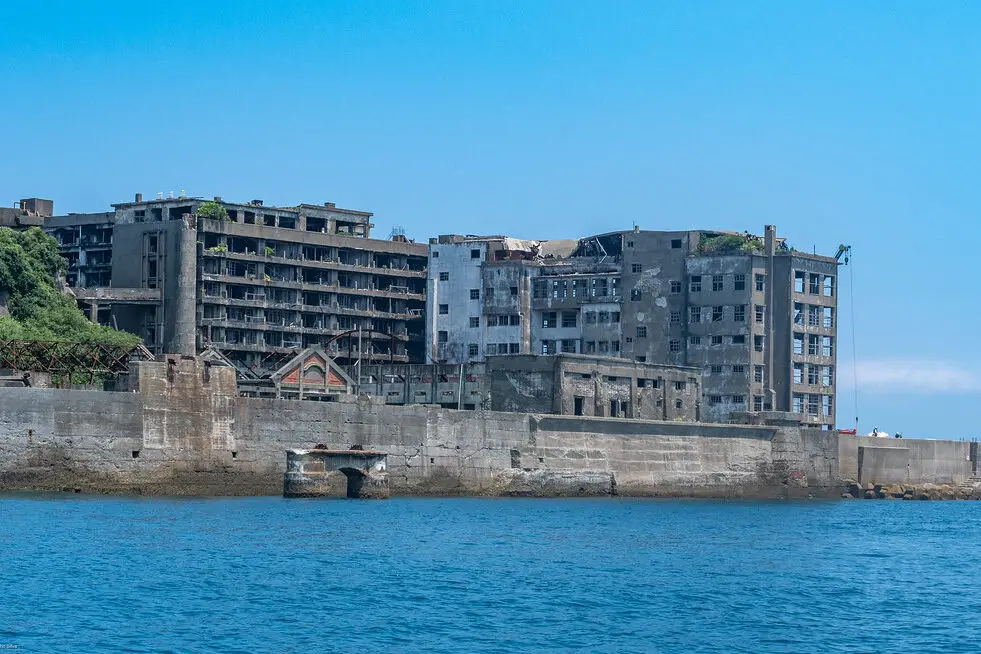
While Hashima Island is fairly well-known, its underground coal mine tunnels are a different story. These stretches run beneath the island like forgotten veins and were once the lifeblood of the coal operation. Closed off and dangerous, they were once heavily restricted due to risk of collapse.
Now, there’s little stopping anyone from entering if they’re brave—or reckless—enough. Some parts are partially caved in, others eerily intact, with rusted carts and helmets still lying around. The humidity makes everything feel heavy and otherworldly. It’s not for the faint of heart, but those who go in say it’s like stepping into another world.
11. The Salton Riviera, California, USA
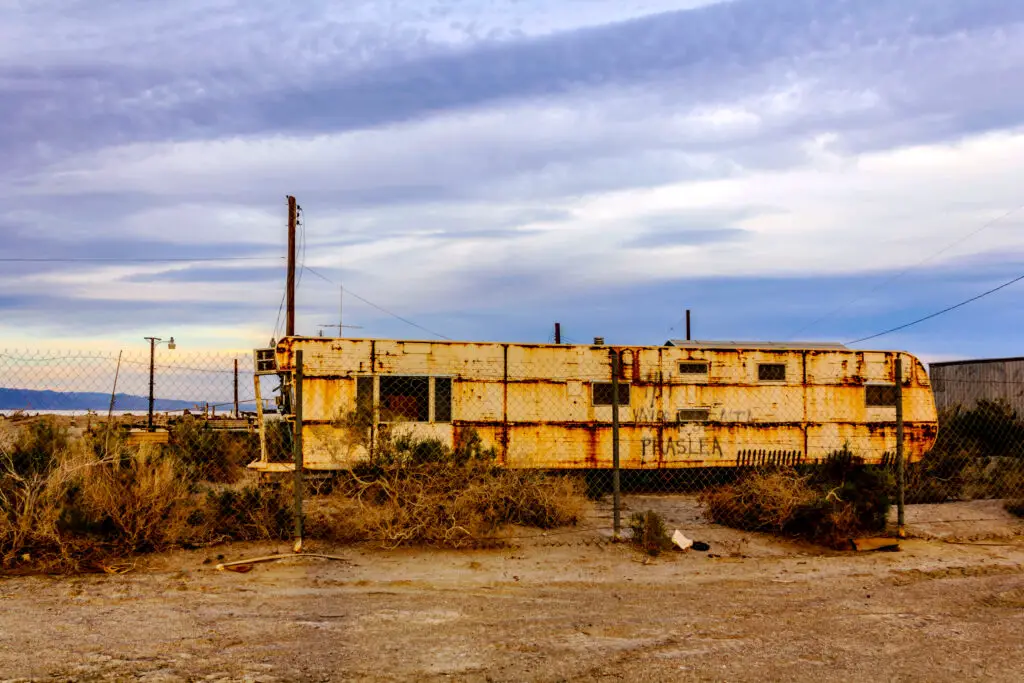
The Salton Sea was once marketed as a glamorous desert getaway, complete with yacht clubs and mid-century motels. But rising salinity and pollution turned it into a toxic wasteland. The resorts shut down, the water receded, and now what’s left is a haunting stretch of decaying buildings and forgotten dreams.
Today, you can drive right in—no security, no guards, just dusty silence. Graffiti covers the old buildings, and broken-down trailers are scattered across the shore. Birds still flock to the area, but the beach is made of fish bones instead of sand. It’s the kind of place where you can feel the past trying to whisper to you.
12. Bodie, California, USA

Bodie is a perfectly preserved Old West ghost town tucked away in the Sierra Nevada mountains. It was a booming gold mining town in the 1800s before everyone packed up and left. For decades it was protected as a state historic park, but staffing has been minimal in recent years.
That means it’s easier than ever to explore without running into anyone official. You can peek inside dusty saloons, walk past rusted wagons, and imagine what life was like during the Gold Rush. Signs do ask you not to take anything, but there’s no one there to stop you. Bodie’s biggest guardian now is just the wind.
13. Teufelsberg, Germany

This man-made hill in Berlin was built from the rubble of World War II and topped with a U.S. spy station during the Cold War. After the fall of the Berlin Wall, the site was abandoned and fell into disrepair. While parts have been reclaimed for art exhibits and urban exploration, the rest of it is wide open.
The old radar domes still stand, their skeletal frames echoing with the wind. There are no fences or guards stopping people from climbing up and exploring the graffiti-covered structures. Some say you can still hear strange sounds coming from the radar towers at night. Whether that’s ghosts or just the acoustics, who knows—but no one’s watching.
